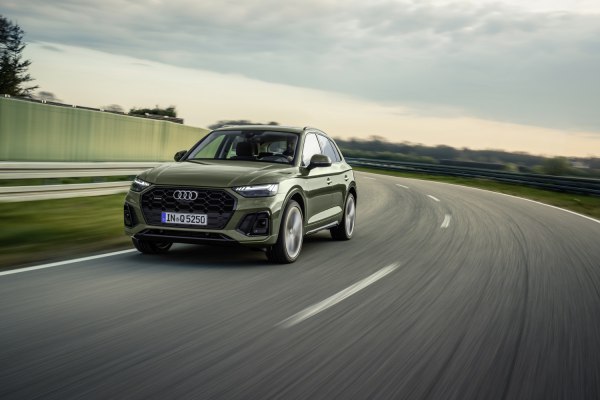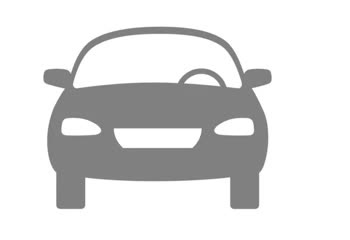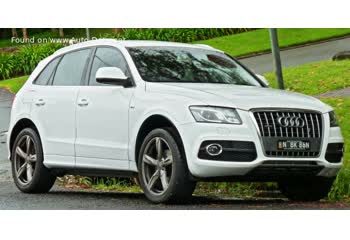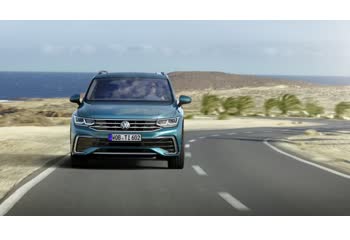Everything you need to know about specifications and performance - Audi Q5 2020 - 35 TDI (163 Hp) Mild Hybrid S tronic

Overview:
What is the engine capacity of a Audi Q5 2020?
The engine capacity of the Audi Q5 2020 is 1968.
Audi Q5 2020 How many horsepower?
The engine power of the Audi Q5 2020 is 163 Hp @ 3250-4200 rpm..
What is the Audi Q5 2020 engine?
Audi Q5 2020 engine is EA288 evo / DEZE, DTNA. (Click to see other cars using the same engine)
How much gasoline does a Audi Q5 2020 consume?
The Audi Q5 2020 consumes 4.7-4.8 liters of gasoline per 100 km
General:
Brand: Audi
Model: Q5
Generation: Q5 II (FY, facelift 2020)
Modification (Engine): 35 TDI (163 Hp) Mild Hybrid S tronic
Start of production: September, 2020
End of production: September, 2024
Powertrain Architecture: MHEV (Mild Hybrid Electric Vehicle, power-assist hybrid, battery-assisted hybrid vehicles, BAHV)
Body type: Sports Utility Vehicle (SUV)
Seats: 5
Doors: 5
Engine:
Engine systems: Start & Stop System
Power: 163 hp @ 3250-4200 rpm.
Power per litre: 82.8 hp/l
Torque: 370 nm @ 1500-3000 rpm.
Engine Model/Code: EA288 EVO / DEZE, DTNA
Engine displacement: 1968
Number of cylinders: 4
Engine configuration: Inline
Number of valves per cylinder: 4
Fuel injection system: Diesel Commonrail
Engine aspiration: Turbocharger, Intercooler
Valvetrain: DOHC
Engine oil capacity: 5.5 l
Coolant: 11.5 l
Engine layout: Front, Longitudinal
Cylinder Bore: 81 mm
Piston Stroke: 95.5 mm
Compression ratio: 16:1
Performance:
Fuel Type: Diesel
Fuel consumption (economy) - urban: 5.4-5.5 l/100 km
Fuel consumption (economy) - extra urban: 4.2-4.4 l/100 km
Combined fuel consumption (WLTP): 5.6-6.1 l/100 km
Fuel consumption (economy) - urban (NEDC, WLTP equivalent): 5.4-5.5 l/100 km
Fuel consumption (economy) - extra urban (NEDC, WLTP equivalent): 4.2-4.4 l/100 km
Fuel consumption (economy) - combined (NEDC, WLTP equivalent): 4.7-4.8 l/100 km
Fuel consumption (economy) - combined: 4.7-4.8 l/100 km
Emission standard: Euro 6d-ISC-Fcm
Acceleration 0 - 100 km/h: 9 sec
Acceleration 0 - 62 mph: 9 sec
Maximum speed: 213 km/h
Weight-to-power ratio: 10.7 kg/Hp, 93.7 Hp/tonne
Weight-to-torque ratio: 4.7 kg/Nm, 212.6 Nm/tonne
Acceleration 0 - 60 mph: 8.6 sec
Electric system:
Battery technology: Lithium-ion (Li-Ion)
Electric motor power: 3 hp
Electric motor Torque: 60 nm
Electric motor location: Front, Longitudinal
Battery voltage: 12 V
Space:
Kerb Weight (kg): 1740
Max. weight (kg): 2420
Max. roof load: 75 kg
Max load (kg): 680
Trunk (boot) space - maximum: 1520 l
Trunk (boot) space - minimum: 520 l
Permitted trailer load with brakes (12%): 2000 kg
Fuel tank capacity: 65 l
AdBlue tank: 12 l
Permitted trailer load without brakes: 750 kg
Permitted towbar download: 100 kg
Permitted trailer load with brakes (8%): 2000 kg
dimensions:
Length: 4682 mm
Width: 1893 mm
Height: 1637 mm
wheelbase: 2819 mm
Width including mirrors: 2140 mm
Front track: 1616-1623 mm
Rear (Back) track: 1609-1611 mm
Front overhang: 910 mm
Rear overhang: 953 mm
Minimum turning circle (turning diameter): 11.8 m
Powertrain, Suspension and Brakes:
Drivetrain Architecture: The Internal combustion Engine (ICE) and electric motor drive the front wheels of the car with the ability to work only in mixed mode.
Drive wheel: Front wheel drive
Number of gears and type of gearbox: 7 gears, automatic transmission S tronic
Front brakes: Ventilated discs, 338 mm
Rear brakes: Ventilated discs, 330 mm
Assisting systems: ABS (Anti-lock braking system)
Steering type: Steering rack and pinion
Power steering: Electric Steering
Tires size: 235/65 R17; 235/60 R18; 235/55 R19; 255/45 R20
Wheel rims size: 8J x 17; 8J x 18; 8J x 19; 8J x 20
Front suspension: Coil spring, Independent multi-link suspension, Transverse stabilizer
Rear suspension: Independent multi-link Spring suspension with stabilizer
See also

Last generation.
Its production began in 2024 until Now

Other generation.
Its production began in 2008 until 2009

Same production year and almost the same engine capacity.
Its production began in 2020 until 2021

Same production year and almost the same engine capacity.
Its production began in 2020 until 2023

Write a comment